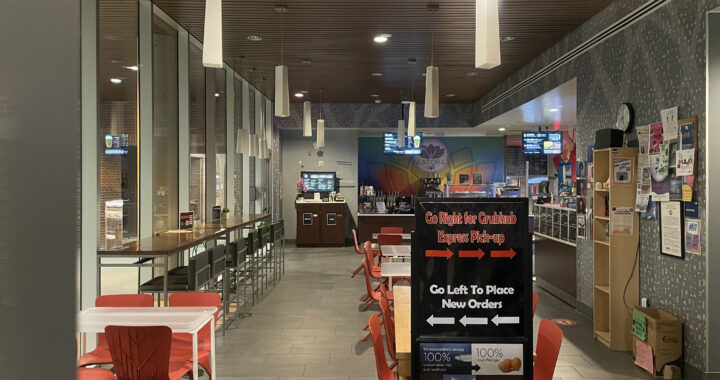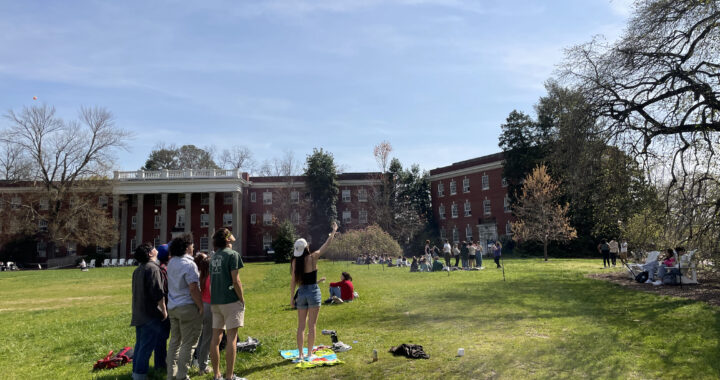Online archaeology conference offers interactive experience
4 min read
The archaeology lab is located in the basement of Combs Hall. | Photo courtesy of Matthew Bova
MATTHEW BOVA
Staff Writer
Despite educating adults, much of the undergraduate experience shields students from the realities of the professional world. COVID-19 forcing society to move these experiences to a virtual setting adds to the sense of being unprepared for professional life. Despite this, my first archaeological conference proved to be a rewarding experience, despite the format under which it took place. I had the opportunity to learn from some of the top archaeologists in the region.
Archaeology is the study of the past through the recovery of underground artifacts. Archaeologists are employed by a variety of institutions: universities hire archaeologist professors, governments employ archaeologists who work to preserve historic resources on their property, museums often have archaeologists on staff, and Cultural Resource Management companies hire archaeologists to make sure their clients do not damage historic resources. What unites them all is a passion for the field, constantly coming up with new methods of excavating and analyzing historic and prehistoric sites; the field draws influence from natural and social sciences in order to understand the past. Archaeologists from all these institutions and disciplines gather at conferences throughout the year to present new findings and methodologies.
Back in March of 2020, the 2020 Mid-Atlantic Archaeological Conference (MAAC) had to be cancelled due to concerns over COVID-19. This was my first indication that the virus was going to be a “big deal,” but I obviously couldn’t imagine it would still be around more than a year later. It was supposed to be my first academic conference, but in the coming weeks it became the least of my worries.
In order to avoid cancelling MAAC again in 2021, UMW’s Dr. McMillan and the other organizers had to come up with a way to run a conference virtually. Eventually, they settled on hosting it over Gatherly. The software uses a series of virtual rooms and dots. Each dot represents a user, and if the user moves into a space where another dot is, they will start a call. They can also broadcast to the whole floor. It is by no means a perfect system, but it allowed MAAC to have a degree of interactivity and allowed the presentations to be held entirely online.
The software definitely had its advantages. It allowed attendees to simulate the small talk that would occur naturally at a conference, as well as allow for simultaneous events to be held. Still, it had the same issues that are present in all virtual calling: uncertainty of whether you’re muted, accidentally cutting someone off due to latency, and connection issues. Overall, it worked well, but the stories I heard about the celebrations that took place at previous conferences left me feeling like I was missing something while stuck behind the screen.
Overall, the conference was a fantastic experience. I got to attend some amazing lectures and met some very interesting people. Many presented the results from their excavations, while others held panels on topics like descendant communities or technological applications. I had a great time at the student discussion centers, meeting lots of graduate students. After I gave my presentation, I was approached by an esteemed professor who enjoyed my presentation and offered to send me valuable research material he had gathered from the Smithsonian archives, including original accounts of John Smith’s visits with the Patawomeck.
UMW’s Department of Historic Preservation was highly present at the conference. Dr. McMillan was the president-elect at the conference and set up the Gatherly service. Delaney Resweber, senior historic preservation major and my co-worker at the UMW Archaeology Lab, won the student paper contest for her interpretation of the Stratford Hall site. Claire Ross, senior historic preservation and anthropology major, presented her paper, Material Expressions of Power and Ideology in a Plantation Context. Lillian Salamone, a 2020 graduate historic preservation major, presented a post created by them along with Lawrence King and Kathleen Keith on a potential 19th Century site.
I was presenting on the topic of Esri StoryMaps and their usage in visualizing archaeological information. As a geography student, much of my interest in archaeology is focused around spatial relationships, modelled using software known as GIS. StoryMaps allows a user to adapt these GIS maps and create web apps that present the data in a visually appealing format. During the pandemic, Delaney and I have been utilizing StoryMaps alot to showcase the sites recorded in the UMW Archaeology Lab, and I am working with Dr. McMillan on a StoryMap on the history of the Patawomeck Tribe.
MAAC 2021 reminded me why I love archaeology. While far from perfect, the field of archaeology has some of the most interesting and passionate people I’ve had the pleasure of meeting. The ability to write an equation to give you a date from a pile of clay pipes or to study gender roles through a house’s trash heap, requires a level of dedication and insight that inspires my academic journey.











